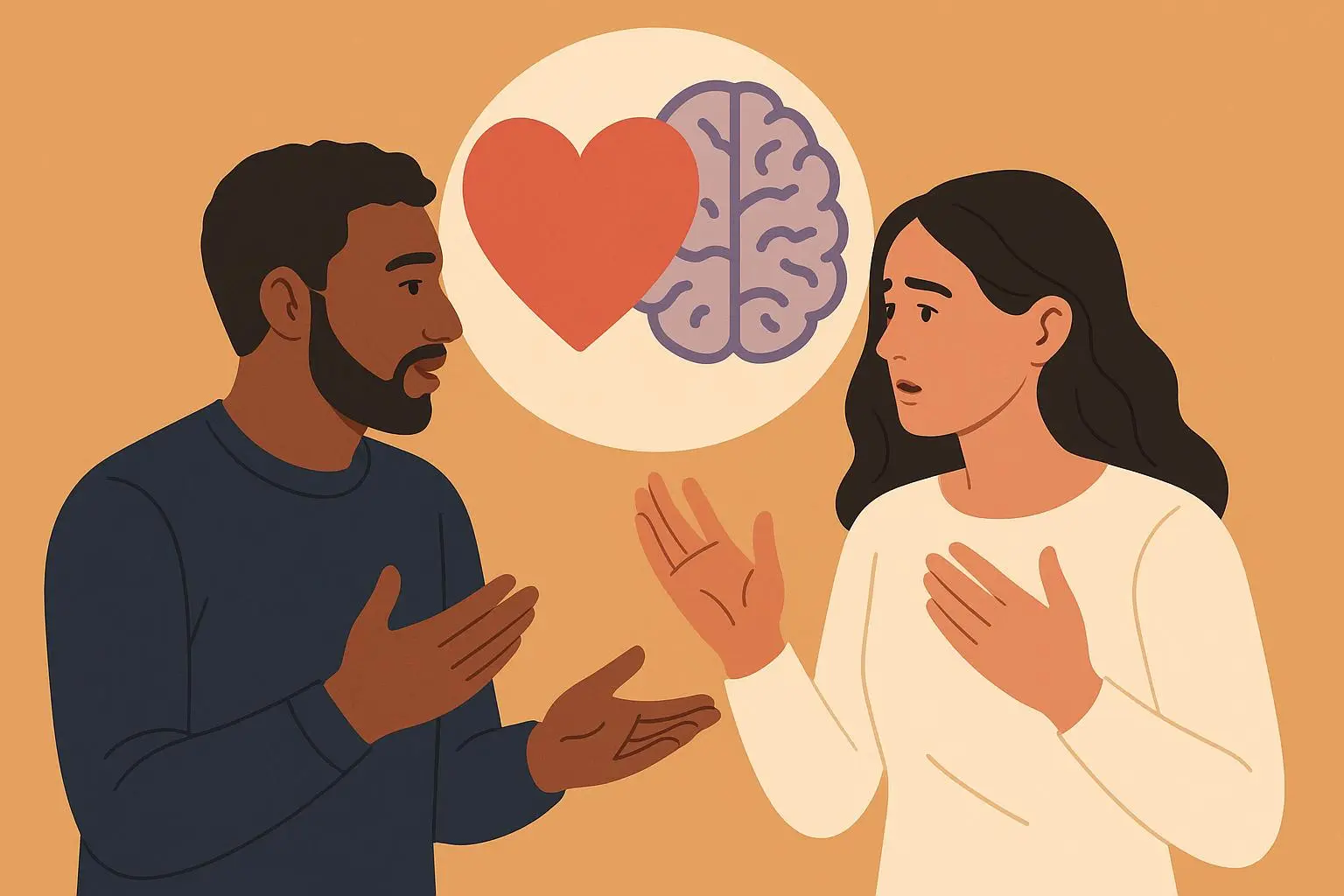
How Emotional Intelligence Can Save Your Relationship
Published on 10/8/2025 • 7 min read
When I first started dating again after a three‑year break, I thought the hardest part would be making a good first impression. Turns out the real challenge was keeping the conversation—and the relationship—alive. I’d hit a wall every time my partner and I tried to talk about the future: we’d both get defensive, the words turned into accusations, and the night would end with a cold silence. I felt like I was speaking into a void. That night, after I’d left the house, I stared at the blinking “Unread” icon on my phone and thought, What if we could just stop the flood?
It turns out the secret isn’t a new dating app or a slick profile photo—it’s emotional intelligence (EI). In the next few paragraphs, I’ll share the research that backs this claim, give you quick wins for the next time you feel the heat rising, and show you how a few simple tools can turn a fight into a connection.
Quick Answer: How EI Saves Your Relationship
- EI = less emotional flooding – you’re less likely to feel “I’m being attacked” when your partner says something that feels off.
- EI = better conflict resolution – you’ll lean toward collaboration instead of competition.
- EI = deeper intimacy – you can share feelings without fear of judgment.
If you’re already feeling burnt out by arguments, start by practicing one of the techniques below. You’ll see a difference in a week or two, and that’s the first step toward a healthier, happier partnership.
1. The Science of “Feel‑It‑First” Love
When couples talk, they’re not just exchanging facts—they’re exchanging emotions. Researchers found that higher EI predicts 39 % of the variance in positive conflict resolution among women (Borrachero et al., 2023).
Why it matters
If you can read your own emotional cues and those of your partner, you’re less likely to misinterpret a “I’m fine” as a sign of indifference. Instead, you’ll see the underlying worry and address it directly.
2. Emotional Flooding: The Silent Argument Killer
Have you ever felt your chest tighten and your words turn into a monologue during a disagreement? That’s emotional flooding. EI helps you spot the early signs and pull back before the tide crashes over you.
A 2023 study shows that women with higher EI are better at mitigating this flood, leading to more constructive conversations (Pritamani, 2023).
Practical move
When you notice your pulse racing, give yourself a “time‑out.” Count to five, take a deep breath, and say to yourself, “I need a moment.” This pause is a proven self‑regulation technique that prevents the argument from spiraling.
3. The Gender Dance in EI
If you’ve noticed that your partner reacts differently than you do, you’re not alone. Women often score higher on emotional awareness and empathy, while men tend to excel in emotional regulation. This mismatch can create a “communication gap.”
How to bridge it
- For the partner who’s more aware: practice grounding techniques to avoid feeling overwhelmed.
- For the partner who’s better at regulation: slow down and ask, “What’s going on inside you?”
By acknowledging these natural differences, you can turn potential friction into a complementary strength.
4. Tools That Turn Talk into Connection
| Tool | What It Does | How to Use It |
|---|---|---|
| Perspective‑Taking | Imagining your partner’s viewpoint | During a disagreement, say, “I can see why you’d feel that way.” |
| Emotion Labeling | Naming feelings clearly | “I’m feeling hurt because…” |
| Time‑outs | Pausing before escalation | Count to five, breathe, then resume. |
| Conflict Debriefs | Reviewing what happened | After a fight, jot down each partner’s main points and what you’ll do differently next time. |
These aren’t just buzzwords—they’re backed by research. A meta‑analysis of 39 studies found a moderate‑to‑high effect size (r = .43) linking EI to relationship satisfaction.
Try this
Pick one tool to practice each week. Start with emotion labeling—name your feelings, then let your partner do the same. Notice how quickly the conversation shifts from “you’re wrong” to “I understand.”
5. Structured EI Training: From Theory to Practice
You might think EI is a lifetime skill you can’t change. Think again. Online EI programs have shown significant gains that last at least six months.
How to adapt it for couples
- Choose a short module (15‑20 min) focused on empathy or self‑regulation.
- Do it together—watch the video, then discuss how you’d apply it to a recent argument.
- Track progress—note any shifts in how you communicate.
If you’re looking for a structured path, I recommend starting with the “Emotion Labeling” module. It’s the easiest to implement and shows quick results.
6. Rizzman‑Style Boosters (Just a Few Words)
I’ve been experimenting with a few of Rizzman’s tools, and they’re surprisingly handy.
- Conversation openers: A built‑in prompt library can help you start a meaningful dialogue—think “What’s a book that changed your perspective?” instead of the usual “How was your day?”
- Reply generation: When you’re stuck, a quick AI‑generated reply can keep the flow alive, giving you time to think about deeper topics.
- Profile optimization: Fine‑tuning your profile photo and bio can attract people who value emotional depth, setting the stage for a more EI‑friendly match.
Use them sparingly—just enough to spark the conversation, then let the real dialogue take over.
Takeaways: 3 Actionable Steps
- Name Your Feelings – Practice labeling emotions in the mirror, then bring that skill into real conversations.
- Pause, Breathe, Reset – When you feel the flood, give yourself a five‑second timeout.
- Do a Weekly Check‑In – Share one thing you’re grateful for and one thing you’re feeling.
Start with one step this week. Keep a tiny journal (a note on your phone works) to track how you feel before and after. You’ll see that the relationship isn’t just surviving—it’s thriving.
If you’ve found this helpful, check out our other posts on building intimacy and mastering the art of dating:
Remember, emotional intelligence isn’t a magic bullet, but it’s the most powerful tool you can add to your relationship toolbox. Give it a try, and watch the sparks turn into steady flame.
Ready to Optimize Your Dating Profile?
Get the complete step-by-step guide with proven strategies, photo selection tips, and real examples that work.


